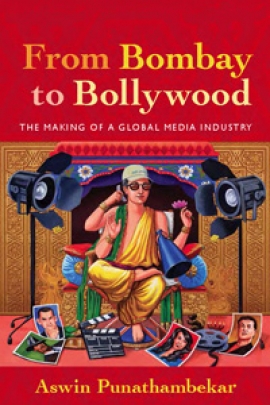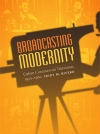
Arguing that it is both inaccurate and anachronistic to conceptualize Bollywood as a film industry, Aswan Punathambekar examines in this book the transition of Bombay/Mumbai from local site of a national and regional film business to Bollywood as a global media industry, a “transnational cultural and industrial formation.” The book charts a path beyond the study of a national film culture toward a concrete history of media convergence: the intermedia relations of film, television and digital media industries that reshaped Bombay into Bollywood.
The book considers the transition from Bombay to Bollywood as a case of how the “global” is imagined, negotiated, and rearticulated as a scale of operation, contributing thereby to work on globalization as related to media and communication practices and their entanglement with architectures of global capital within which they unfold. At the same time, to get at the many interconnectivities that converge to produce Bollywood as a global media industry, Punathambekar focuses on a specific sociohistorical period—the two decades after 1991, a time marked by three significant transformations linking Bombay/Mumbai to wider developments. First was the reconfiguration of national space in transnational terms, exemplified by the Indian state’s efforts to reformulate its relationship with both the diaspora and media/communications industries, including policy changes associated with the Bombay film industry. Second was the reinvention of Bombay as a global city during this intensely globalizing period, its new status as a major node in transnational networks of capital and cultural production. Finally, there was a rapid expansion of media space in India during this period—developments of TV, advertising, Internet, and cellular industries as well as their technological convergence.
The study brings the critical perspective of emerging industry studies and a production cultures framework of analysis to bear on media industry practice to concretize the operations, logics, and discourses of a global media industry in a culturally postcolonial setting. Punathambekar describes From Bombay to Bollywood as a multi-sited and transnational ethnography of a specific nexus of media production, and in realizing it he has drawn on many sources: in-depth interviews with a variety of industry professionals, participant observation at production sites and professional meetings and events, critically assessed print materials such as trade press journalism, press kits, printed convention handouts, and relevant scholarly literature. The result is a set of situated perspectives on the rapid transformation of a cinematic culture into a global juggernaut involving a widely distributed plethora of agents, funding sources, media platforms and outlets, audiences, and marketing schemes. This excerpt highlights some of the convergences between diaspora dot-coms and tech entrepreneurs, financial deals, and marketing/agency expertise that helped extend the financial capacity and global reach of Bollywood media productions. Punathambekar’s media industries approach to an existing and expanding literature on the Indian media landscape underscores the importance of media industry professionals, and not just the form, content, and celebrities of specific media productions, to fill out the picture of the media worlds we inhabit and consume.






